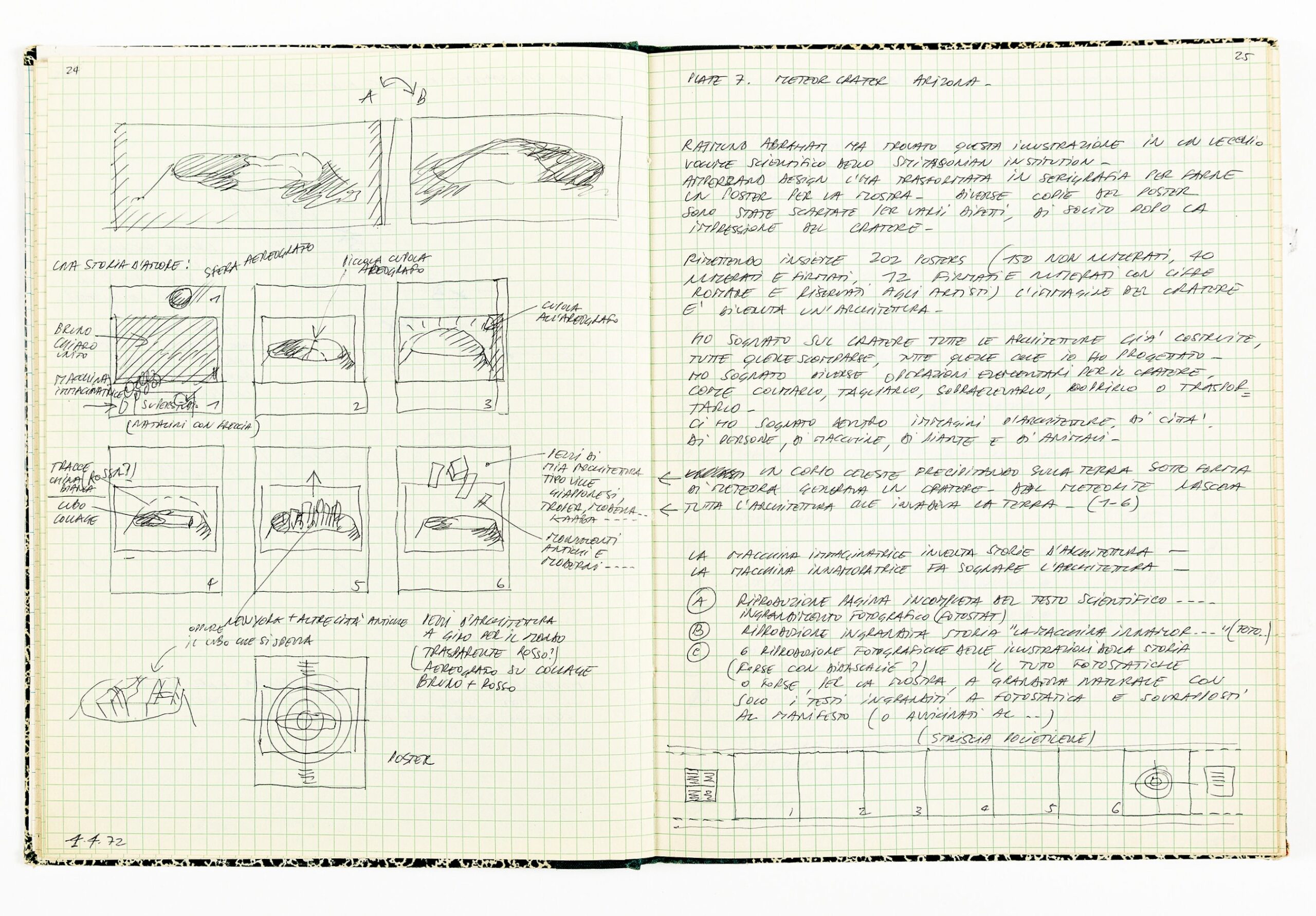Geography of Hope: Adolfo Natalini and Superstudio
This is the first of four extracts taken from an article first published in issue 40 on nonsite.org, dedicated to ‘New Views on Modern Architecture at Mid-Century’.
As we descended into a World War that threatened the obliteration of decency and history, the poet Archibald Macleish, then Librarian of Congress, called for a national pledge to the preservation of documents and papers, as messages of hope cast to sea in a bottle by one age to awaken the memory of the next. Among such signals across the expanse we can count drawings made to probe architectural ideas as some of the most eloquent and least self-conscious. For the art of architecture has a central part to play in building a poetic, imaginative and philosophical culture for the mind to dwell in, especially in the contemplation of our place in the wider universe, and of the purpose and character of our shelter within it.
In our fascination with the wonders of social and domestic hygiene that post-war architects wrought or proposed for the reconstruction of society in the post-war era, it is possible to forget that theirs was also a time, at the dawn of the space age and with the tools of its engineering at hand, when architecture, even in apparently concrete proposals, was exploring anew the transcendental relationship between the closed and the open, the inner and the outer, the near and the distant, the real and the ineffable, the matter of shelter and the vacancy of wilderness, in such grand expressions as the Saarinens’ Gateway Arch, the courtyard of Kahn’s Scripps Institute, or Netsch’s Air Force Academy chapel.

The short extracts that follow stand back from those exercises in monumental splendour, to see what might be learned from works in the Drawing Matter Collection that more intimately explore the architectural path through which wilderness and shelter, the proximate and the infinite, fed our imaginations in the twenty-five years from 1950 to 1975. They are adapted from an essay in a special issue of the online journal nonsite, reassessing the course of architecture in the post-war era, edited by Todd Cronan and published in September 2022, where the projects are presented in much fuller detail.
Looking at them, I think of the famously eloquent plea of the novelist Wallace Stegner in his 1960 ‘Wilderness Letter’, now pressingly poignant, in which he pleads for the protection of the desolate and inaccessible, simply because, though we may never see it, we need to ‘know that such a timeless and uncontrolled part of Earth is still there …reassuring ourselves of our sanity as creatures, a part of the geography of hope’.
‘A Tale of Love’: Superstudio at Meteor Crater
‘I have imagined on the crater all the architectures already built, all those that have disappeared, and all those to come that I dream of designing’. So Adolfo Natalini opens ‘The Story of Meteorites’ that he invented while visiting Meteor Crater between the 4th and 6th of April 1972, and then thought out, re-thought, corrected and revised over many sheets of his ‘American Notebook,’ and presenting it first through a series of plates in exhibition in Providence. It is a ‘tale of love’, in which ‘Architecture’ is born in the crater where the avatar of Superstudio – ‘the unlovable machine’ – meets the cosmic force of the meteor. Traces of a hut and a tomb begin to appear under the dome that has grown above the chasm to shelter them; from this genesis architecture develops toward material perfection in the skyscraper city; and then it vanishes for want of soul and spirit, to be re-conceived as a form of geometrical abstraction – a ‘natural philosophy’ where ‘life can be freely constructed in cosmic consciousness’ and the land left ‘unpolluted by design.’

Read the article in full on nonsite.org.
